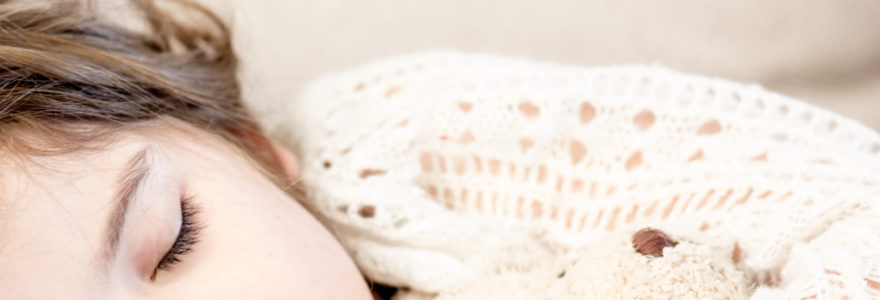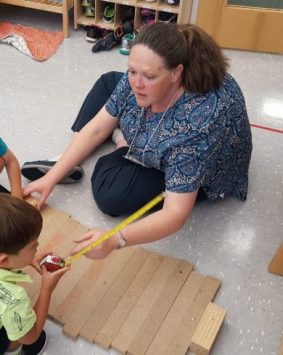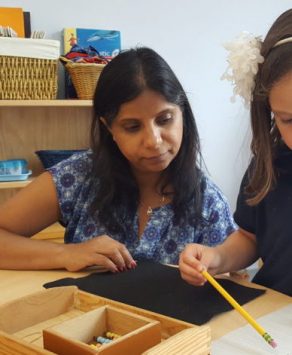
Sleep Deprivation in Kids
With winter upon us and the world around us seeming to go into hibernation, I find myself thinking more and more of curling up under a thick blanket for a long winter’s nap.
Of course, our children rarely follow suit. Us adults would probably pay good money for a regular nap while our little ones count down the days until it is no longer required. Yet, they are the ones who need the sleep the most, but how much do they need?
Do you think your child gets enough sleep?
According to the 2004 Sleep in America Poll conducted by the National Sleep Foundation, most parents would answer “yes.” The poll, which focused specifically on children, found that “over two-thirds” of children, from infancy to adolescence do not get enough sleep and/or experience hindering sleep problems. That is over 66% of children not getting enough Zs!
With 180 students, that means that statistically speaking, 118 of our students probably aren’t getting enough sleep. Could your student be one of them?
Considering most adults feel sleep deprived, many adults chalk it up to preparation for the reality of the future, but lack of sleep may have a significant negative impact, especially for children. Consider how you feel as an adult when you are tired. For children, who often can’t articulate their feelings, sleep deprivation can be downright debilitating.
Insufficient sleep hinders development across all fronts from the physical to the emotional. It contributes to behavior problems, impaired learning, obesity, decreased immunity and mood disorders. In fact, sleep deprivation presents similarly to ADD and ADHD in young children. Sleep deficiencies can even aggravate atopic eczema which in turn keeps children awake itching (Reid &Lewis-Jones, 1995, p.38-41))! Overall, inadequate sleep can create a vicious cycle.
Since most parents may not even be aware that their child is not getting enough sleep, it is important to identify what constitutes a sleep disturbance and learn to recognize the signs of sleep deprivation in children.
Sleep disturbance is a broad term. It includes any sleep interruption including refusal to go to bedtime, trouble falling asleep, awaking during the night, and even snoring (which is considered abnormal in children). Add in normal developmental challenges like bed wetting or night terrors and sleep issues can easily become habitual.
You may immediately recognize some of these issues if your child struggles at bed time or you have to repeatedly tend to your child during sleep time. In fact, one in three children need attention from parents at least once a week according to Jodi Mindell, PhD, director of The Sleep Disorders Center at Children’s Hospital of Philadelphia.
However, if your child is having disturbances in sleep during the night, you may not even be aware it is occurring. Unless you are going to stay awake to watch your child sleep (which we surely don’t recommend—your sleep is important too!), you must be attuned to the signals children unknowingly provide us during waking hours, many of which seem to indicate the opposite of tiredness.
The following are some common signs of sleep deprivation in children:
- Hyperactivity, especially in the evening
- Difficulty waking up in the morning
- Falling asleep in the car (non-infant children)
- Sleeping longer on weekends than during the week
- Cranky and irritable, especially between 4pm and 6pm
- Lack of animation and conversation (including inability to find words when speaking), particularly for older preschoolers and elementary age children
- Difficulties in school, behavioral or academic
- Clumsiness, particularly in younger children
- Disinterest in typically enjoyable activities
Of course, the biggest challenge is getting sleep back on track. Good sleep habits start in infancy. If you have an infant, hopefully you are establishing good habits and if not it is early enough to make simple changes that will get you on the right track. On the other hand, if you have an older child, it might not be as easy, although the recommendations are pretty much the same whether you have an infant or a 3rd grader. Here are some tips for establishing or recreating good habits.
- Know the recommendations for hours of sleep per day (this includes nap times). Infants 14-15, Toddlers=12-14, Preschoolers=11-13, and 1st-5th graders = 10-11. As for naps, keep in mind that 90% of 3 years olds require a nap. Even 25% of 5 year olds require a nap several times a week. While quantity is important, quality is even more important
- Establish a routine and live by it, especially at bedtime. Follow the 4 B’s for a bedtime routine: Bath, Brush Teeth, Book, Bed. This entire routine should not exceed 30-40 minutes
- Make sleep a priority. Honor bedtime and nap time. Do not schedule extracurricular activities, playdates, parties, etc. during nap time or after bedtime.
- The ideal bedtime for children under the age of six is between 7pm and 8 pm. While the time varies from child to child, the time should be consistent. So, if 7:30 works for your child, make it 7:30 every night!
- Even if your child no longer naps, schedule regular quiet time during the day.
- Keep your child’s weekend schedule the same as their weekday schedule. Many families fall into this trap, skipping naps on weekends or pushing bedtime back, but it can quickly throw a child off track
- Remember sleep begets sleep. This often feels counterintuitive. A 3-year-old stops napping and many parents mistakenly assume they are outgrowing the nap when in fact the child is overtired. They stop napping regularly and once again a cycle of bad sleep begins. This is particularly true for infants and toddlers.
- If you child wakes too early in the morning, try putting them to bed Another counterintuitive one. Naturally, we figure keep them up later, they will sleep later. If you’ve tried this, you know it doesn’t usually work. On the contrary, children tend to sleep longer the earlier they go to bed.
- Exercise early in the day. There is no denying physical play is highly important for children and supports good sleep habits, but physical activity should not happen in the hour before bed. This is why our students play outside before lunch instead of after so there is ample time between play and nap
- Turn off the TV and other electronic devices. There should be no electronics at least one hour before bed (this holds true for adults!). The Sleep in America Poll revealed that nearly half of all children, and one in three preschoolers, have electronics in their room. These children, on average, slept two hours less per week than those who didn’t.
- Eliminate caffeinated beverages. Surprisingly, one in four children have at least one caffeinated beverage per day which, according to the Poll, resulted in 3.5 hours of lost sleep per hour.
- Avoid sugary drinks and treats. Sugar impacts children strongly. Avoid sugar entirely in the evening.
- Be sure your child is getting enough to eat throughout the day.
- If your child resists bedtime, make a bedtime pass. Decorate an index card together and laminate it. Tell your child they may use it once per night for an extra request (e.g. another kiss, a drink of water, a second book, etc.).
- Allow your child to learn to self-sooth. This is a crucial skill that should be learned in infancy, generally when your baby is somewhere between 4 and 6 months. Unfortunately, this sometimes means that we have to give our children the opportunity to cry and be upset. This is difficult for many parents, especially as “crying it out” was given a bad rap by a misinterpreted study that highlighted the potentials for neurological damage due to excessive crying (think all day, for weeks/months). It did not the evaluate the 30-60 minutes of crying associated with a few nights sleep training. In fact, Mindell argues that the life-long benefits of good sleep habits significantly outweigh to struggles of few nights of sleep training (Fields and Brown, 2011, p. 225).
It may seem like an overwhelming topic and if you suspect your child is in the 66% who don’t get enough sleep, you may feel like you’ll never get back on track. But with consistency and patience you will. Keep in mind that children need to learn to sleep just like they have to learn to walk, learn to use the toilet, or learn to read. This is a gift and responsibility we as parents must give our children. If you have an older child, it may take a good deal of time and effort to restore appropriate sleep behaviors, but keep at it. You are doing a great service for your child and his or her development.
If nothing else, do it for your marriage! Dr. Amy Wolfson of Holy Cross College argues that couples with children who sleep well experience more happiness and satisfaction in their relationships.
For more information on sleep and sleep disorders check out the sources for this blog post:
- Fields, D and Brown, A. (2011). Baby 411. Boulder, CO: Windor Peak Press
- Fields, D and Brown, A. (2013). Toddler 411. Boulder, CO: Windsor Peak Press
- Mindell, J, Ph.D. (2005). Sleeping Through the Night. New York: William Morrow Paperback
- National Institute of Health’s “Your Guide to Healthy Sleep,” https://www.nhlbi.nih.gov/files/docs/public/sleep/healthy_sleep.pdf
- National Sleep Foundation www.sleepfoundation.org
- Reid, P. and M.S. Lewis-Jones (1995). Sleep difficulties and their management in preschoolers with atopic aczema. The Journal of Clinical and Experimental Dermatology, Volume 10 (Issue 1), pages 38-41.
- Wolfson, A, Ph.D. (2001). The Women’s Book of Sleep: A Complete Guide to Healthy Sleep, Oakland, CA: New Harbinger Publications.

 Ms. Nikki
Ms. Nikki






Comments are closed here.